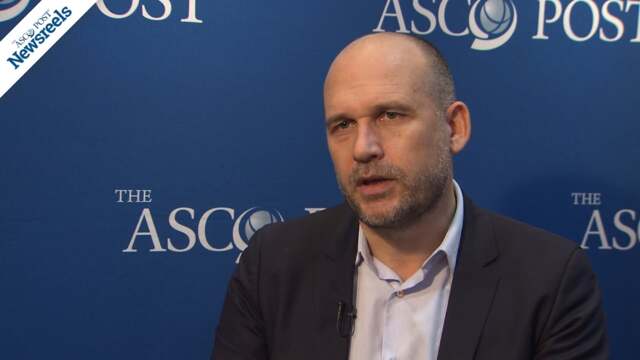Julie Vose, MD, MBA, and Mhairi Copland, MB, ChB, PhD, on CML: Data From the British DESTINY Study
2016 ASH Annual Meeting & Exposition
Julie Vose, MD, MBA, of the University of Nebraska Medical Center, and Mhairi Copland, MB, ChB, PhD, of the Paul O’Gorman Leukaemia Research Centre at the University of Glasgow, discuss decreasing the dose of tyrosine kinase inhibitors in CML patients with stable molecular responses (Abstract 938).
Smita Bhatia, MD, MPH, and Jessica Wu, BA, both of the University of Alabama at Birmingham, discuss long-term morbidity and mortality experienced by chronic myeloid leukemia patients after allogeneic hematopoietic cell transplantation (Abstract 823).
Syed A. Abutalib, MD, of Cancer Treatment Centers of America, and Nelli Bejanyan, MD, of the University of Minnesota, discuss findings from a study conducted by the Center for International Blood and Marrow Transplant Research on treatment for ALL patients, with an available donor, undergoing myeloablative allogeneic hematopoietic cell transplantation in first complete remission (Abstract 684).
Steven Le Gouill, MD, PhD, of Nantes University Hospital and INSERM, discusses study findings from the Lysa/Goelams Group on rituximab maintenance after autologous stem cell transplantation in younger patients with mantle cell lymphoma (Abstract 145).
Jeffrey E. Lancet, MD, of the H. Lee Moffitt Cancer Center and Research Institute, discusses study findings on survival following allogeneic hematopoietic cell transplantation in older, high-risk acute myeloid leukemia patients initially treated with CPX-351 liposome injection vs standard cytarabine and daunorubicin (Abstract 906).
Andrew D. Zelenetz, MD, of the Memorial Sloan Kettering Cancer Center, discusses novel treatments for chronic lymphocytic leukemia, touching specifically on the Gilead 115 trial.





